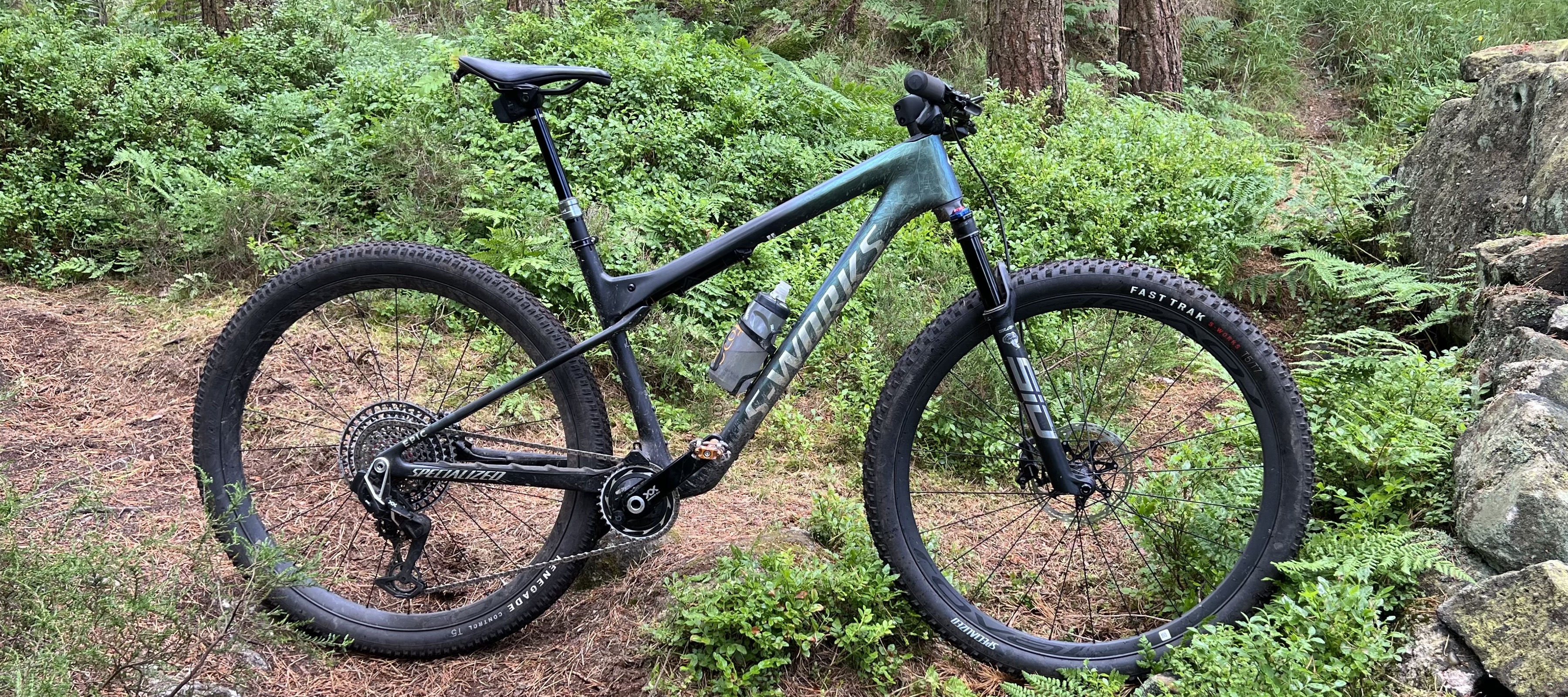Bike Perfect Verdict
Stunning looks and near perfect ultralight race spec make the S-Works Epic World Cup look awesome on paper for short track hyper speed. Set and forget suspension only works well in some situations though and there’s no weight or stiffness gain over more versatile, longer travel XC bikes.
Pros
- +
Stunningly clean looks
- +
Near perfect high post XC spec
- +
Excellent aggro race geometry
- +
Set and forget suspension
- +
Topped out hardtail feel appeal
Cons
- -
Hard top/soft pedal is hard to balance
- -
Harsh and tiring in the rough
- -
No ‘on the fly’ suspension adjustment
- -
Much heavier than a hardtail frame
- -
Heavier frame than Epic EVO
Why trust BikePerfect
Specialized have always pushed a radical ‘set and forget’ on/off agenda with their Epic FSR race bikes and they’ve been massively popular and historically successful for over twenty years. The Epic World Cup re-imagines a similar ride vibe for more challenging courses and kills off more than three decades of Specialized’s Epic race hardtail family in the process. Ultra clean looks conceal a very complicated and often compromised suspension system though.
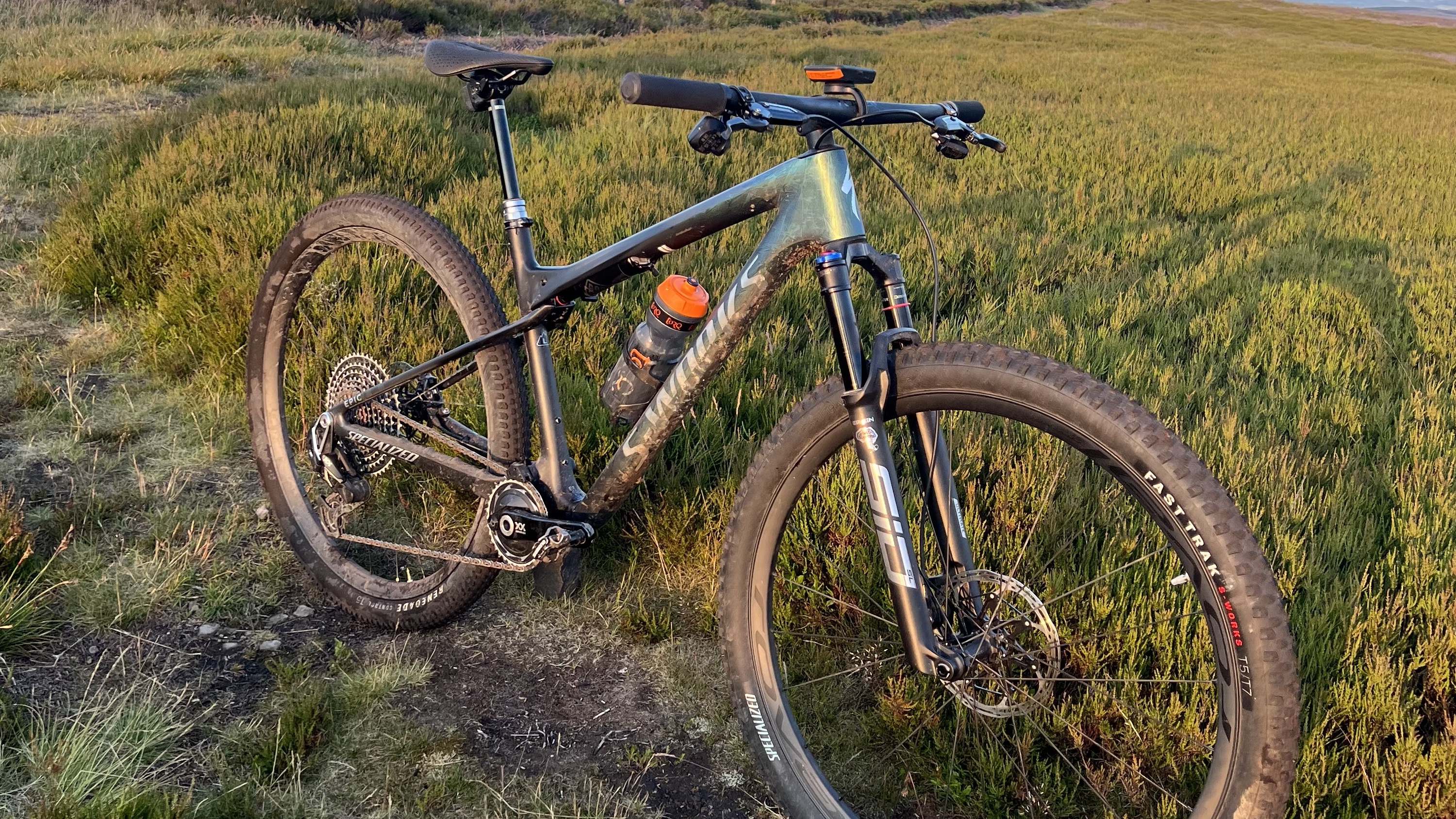
Design and geometry
It’s been interesting to see more and more of Specialized’s XC athletes racing the 115mm travel, ‘trail geometry’ Epic EVO bike in recent seasons, so it’s no surprise the Epic WC has a very similar fit and handling template. That includes a nominal 66.5- degree head angle (lack of rear sag means it’s effectively steeper a lot of the time) and a 466mm reach that’s actually 5mm longer than the EVO. The back end is kept super short at 430mm though, which is the same as the previous Epic hardtail.
It looks like a hardtail in profile too, but there’s actually a conventional main pivot behind the chainring and even a tiny swing linkage driving the unique SIDLuxe WCID shock buried in the underside of the scooped out top tube.
The bottom bracket is a servicing-friendly screw in/out unit, but control routing is through the headset top. There’s room for two bottles in the mainframe and you even get a plastic external SWAT box for a tube and tool built onto the back of the downtube cage. I took that off though as it’s awkward to use and looks ugly on an otherwise stunningly stripped back frame. Paintwork on the S-Works model is semi-translucent and front end only to save weight and the S-Works also uses a lighter 12M carbon composite compared to the 11M lay up of the other Epic World Cup bikes. That gives the medium S-Works frame a claimed weight of 1,765g including shock and hardware.
There’s a small to XL size range in Chameleon Lapis/Granite or Gloss Red/Granite color options. The fork/post/frameset option adds a gloriously floral Gloss Lagoon Blue/Purple Orchid/Blaze Impasto colorway, but it’s not currently available in the UK.
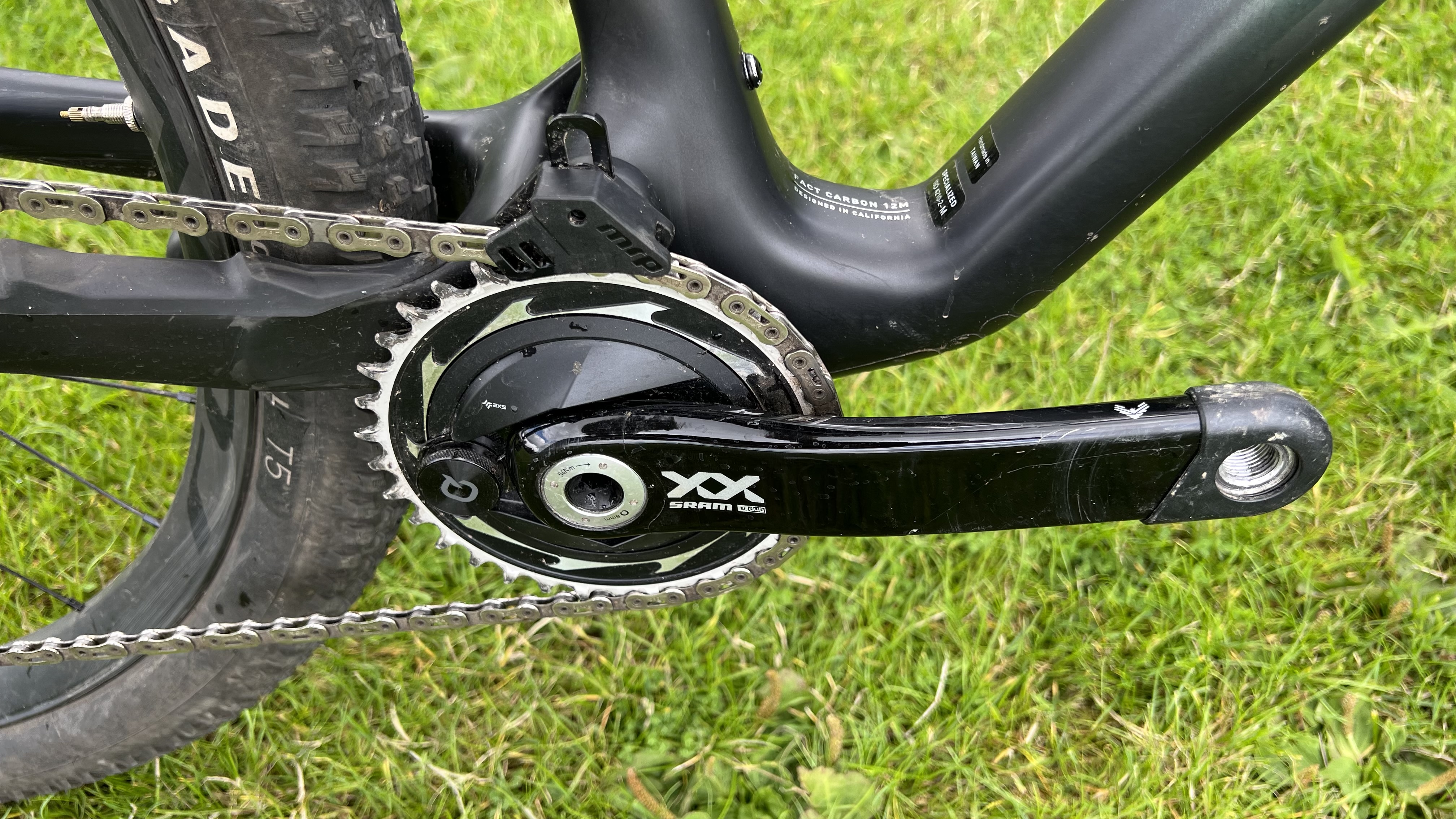
Components and build
Specialized’s partner brand Roval launched a new ultra stiff, ultra light carbon fibre gullwing SL bar and stem combination as well as a superlight rigid SL seat post especially for the Epic World Cup. It’s topped with a braided carbon rail S-Works saddle too. Wheels are also the excellent Roval Control SL with RockShox SID SL fork syncing Torque Cap front hub and ridiculously light 580g S-Works FastTrak front tire. Out back, the Renegade semi-slick gets a slightly tougher but still sub 700g Control carcass, which combines with the broad lipped carbon rims to increase impact flat (snakebite) protection.
The rest of the kit is the latest and highest level of SRAM’s XC race family XX SL Eagle AXS T-Type Transmission. You even get a Quarq double-sided power meter spider on the superlight, narrow stance (168mm Q-Factor) hollow carbon armed cranks. There's also a chain guide to keep you hooked up however rough things get. You’d think the two cylinder calipers on the SRAM Level Ultimate Stealth brakes would be the lightest option too, but professional pedants like me will point out that they’re actually 10g heavier a brake than the four cylinder version. The realigned hoses do work neatly with the internal headset routing though and a 180mm front rotor means they’re plenty powerful.
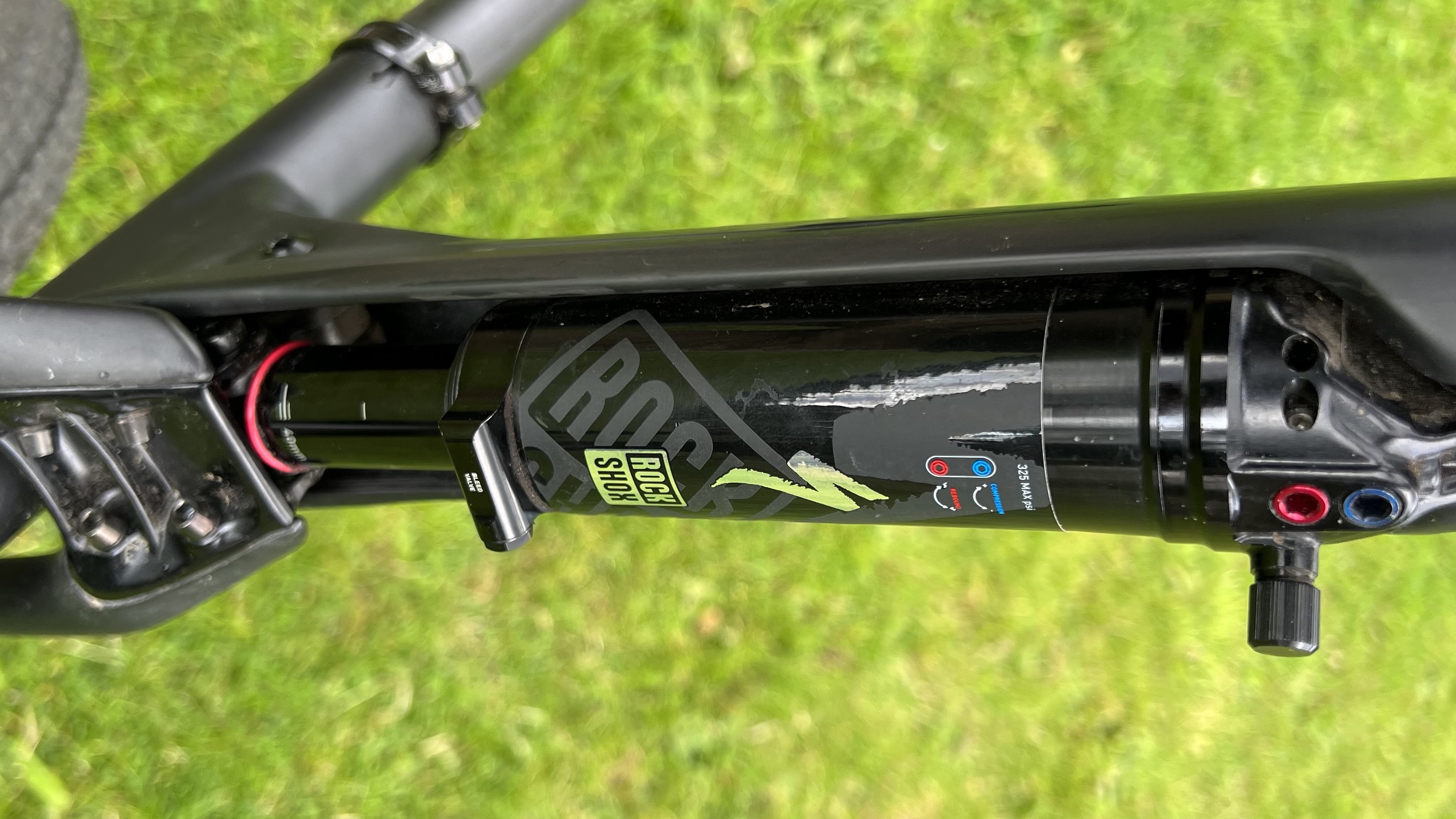
Suspension
The heart of the World Cup design is the extensively modified, elongated SIDLuxe WCID Ultimate rear shock. Not only does this 40mm stroke, 75mm travel set up have a very low leverage ratio and semi-structural, four bolted mount with a super short rocker link. It also has a manually set negative spring chamber. This you can set anywhere from 10 percent sag (Full Gulp) by deflating and squashing to full compression and then pressing the purge valve or 0 percent (Zero Gulp) sag by pressing the purge valve at top out.
The SID SL fork is the recently launched version with a new stiffer machined crown and 110mm of travel, but looks comparatively conventional otherwise. Until you notice the ‘BRAIN’ logo and ‘BRAIN FADE’ control lever on the left hand top cap. This is the latest version of the ‘brass mass’ bump triggered compression lockout system Specialized have been using since the original Epic twenty years ago. It’s had the spike valve removed for a smoother ride now, but it adds 183g over the standard SID SL, making it almost as heavy as the 35mm legged SID.
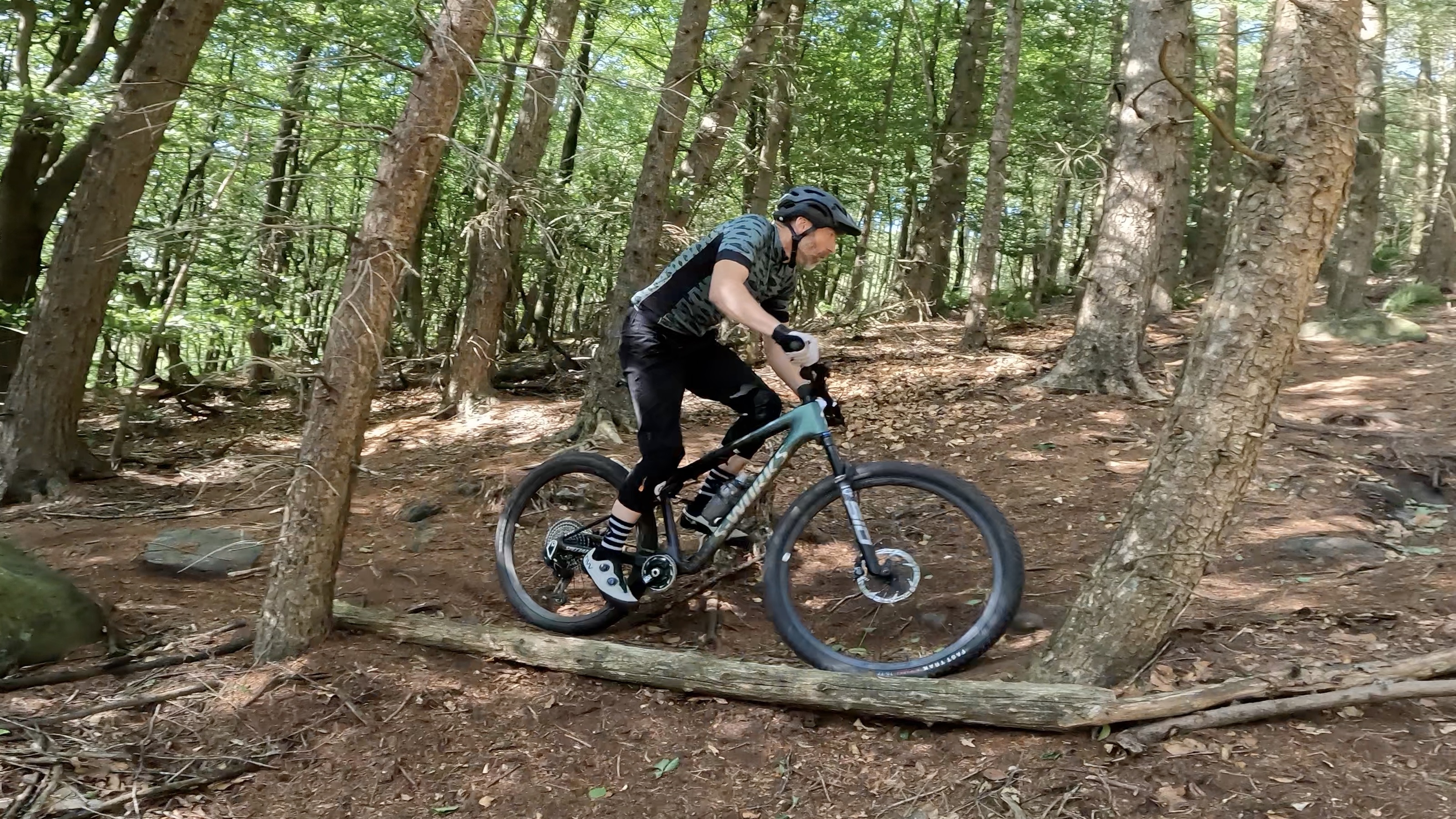
Ride, handling and performance
With a weight under 10 kilos and an ultralight wheel and tire package with semi-slick rear tread and fast freehub reaction, the Epic accelerates like you’re a World Cup athlete yourself. In Full to half Gulp settings, the topped out suspension gives a very rigid feel to the back end and once you’re sagged through the 15mm of float in the fork, you’re sat on a hard BRAIN damper stop at the front too. Again, that gives it a really aggressive feel and the one piece bar and stem is very stiff with a negative rise, and with the rigid seat post up your rear you end up really loading the front end. That’s OK though because the slacker, longer geometry with a usefully grippy front tire means you can really push the Epic hard into turns. That’s reflected in the tire tread choice too and even the seat angle, which looks slack on paper but is effectively steepened by the lack of sag at the rear.
In the reduced Gulp settings fork and frame respond in a similar way to single impacts, with the low leverage shock rushing easily through the mid stroke until it starts coming into contact with the extra large ‘Mega Jounce Bumper’ that controls the end stroke. Specialized have also designed the World Cup with very low levels of anti-squat for a trail bike, let alone an XC bike, so the back end is free to move regardless of pedal pressure. The BRAIN damper on the fork uses a sprung and weighted valve on the compression damper that’s knocked open by bump forces from below to provide a similar feel up front.
As a result, it handles decent sized drops and large hits surprisingly well once you’re used to the high seat post (or you replace that with a dropper like I did for most of the several months I spent testing it). Set up in the ‘Half to Full Gulp’ settings, the rear wheel will roll up and over steps, roots and rocks really easily which potentially makes for excellent technical climbing traction at slow speeds. In other words you’re getting all the rabid race hardtail vibes that Specialized are promising if you’re spinning on smooth surfaces, but enough suspension to add control and maintain speed over occasional lumps. I had some savage ‘short course race simulation’ rides where the psychological effect of the frame/suspension feel and lack of distraction from shock remotes felt fantastic at first. Speaking to the design team for the World Cup, this character is a deliberate choice refined over several years of riding and racing prototypes of the shock system on conventional frames before moving onto specific World Cup test re ‘mules’. That refinement showed on some blisteringly fast Strava segments during testing too and it’s no surprise that the Epic has won World Cup victories in XCC short track events under Specialized’s pro rider Sina Frei.
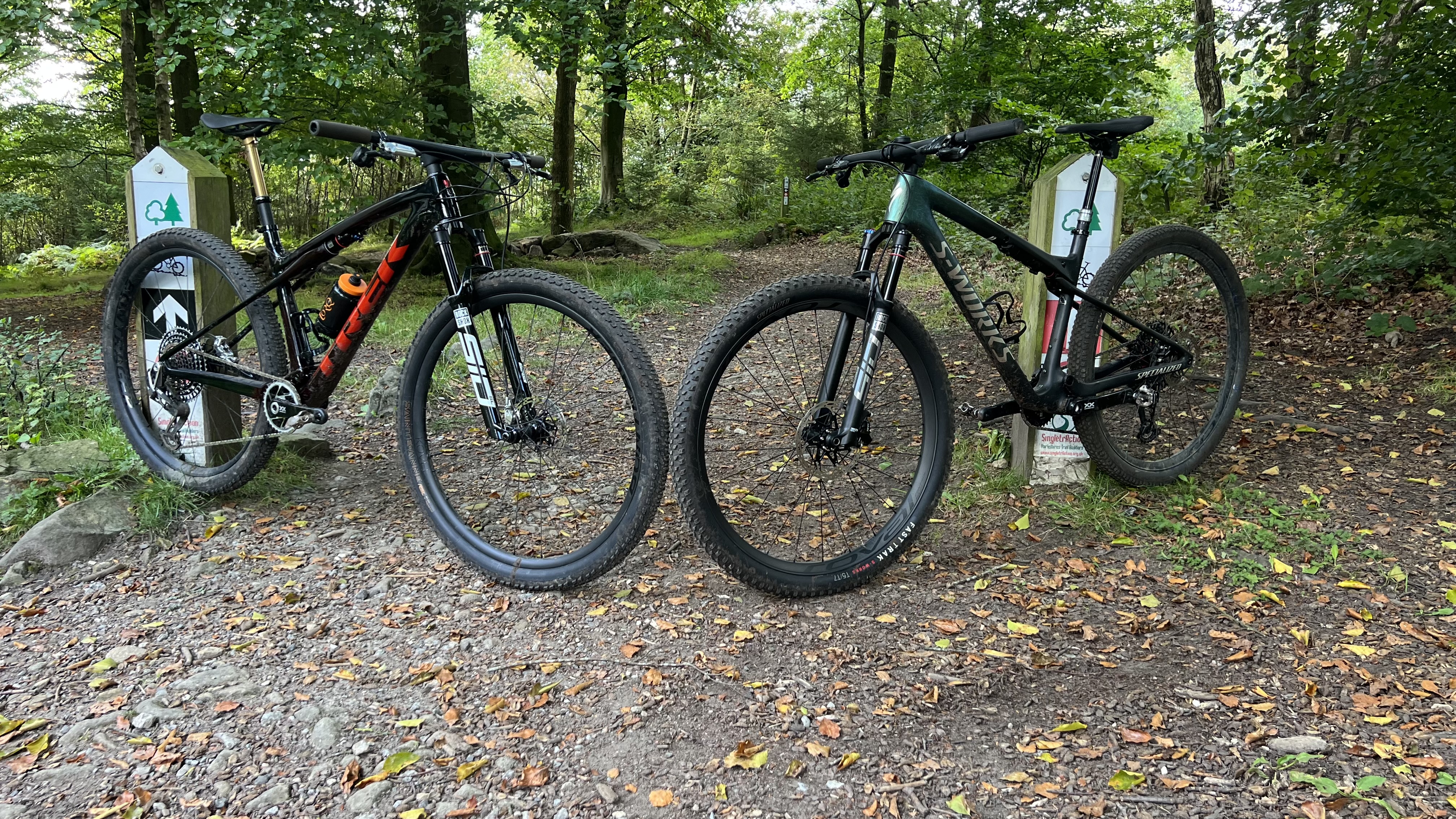
Even when topped out in Zero Gulp though, the low anti-squat kinematic means the back end can start getting sucked into the travel if you’re grunting a gear round rather than spinning. The more ‘Gulp’ you run, the more obvious that is and in Full Gulp the squat of the suspension is really obvious in a soft, ‘rubber chain’ sensation that really undermines the race vibe. Because the first part of the power phase seems to sink into the shock movement it feels like it’s not only ‘clocked’ further round the stroke than normal, but also shorter in duration. That’s something you get used to over time but it’s particularly obvious if you’re switching straight off a bike with high anti-squat percentage ‘stand up’ under power like Trek’s latest Supercaliber. Trying to stop the pedal bounce with added low speed compression often leaves the shock feeling spikey and constipated, while the same happens with the BRAIN fork – sometimes even without the ‘Spike valve’ in there anymore.
The real issue with the World Cup though is that minimal/zero sag set up creates a really harsh, clattery feel over rapid, repeated hits and continual jank if you’re riding at medium to high speeds. That topped out rattle even occurs in the softest settings and the Epic World Cup fatigues legs, shoulders and arms much faster than a conventional full suspension bike on descents or even fast, flat tech sections.
The unsagged suspension setup means there’s not enough shock extension to drop into undulations or gaps for consistent traction, so it feels like you’re skating around on top of the trail not connecting with it. Again, this feels fast at first but back to back with more conventional XC bikes, it’s very clear how much harder it is to keep the Specialized on line over rough and/or random surfaces.
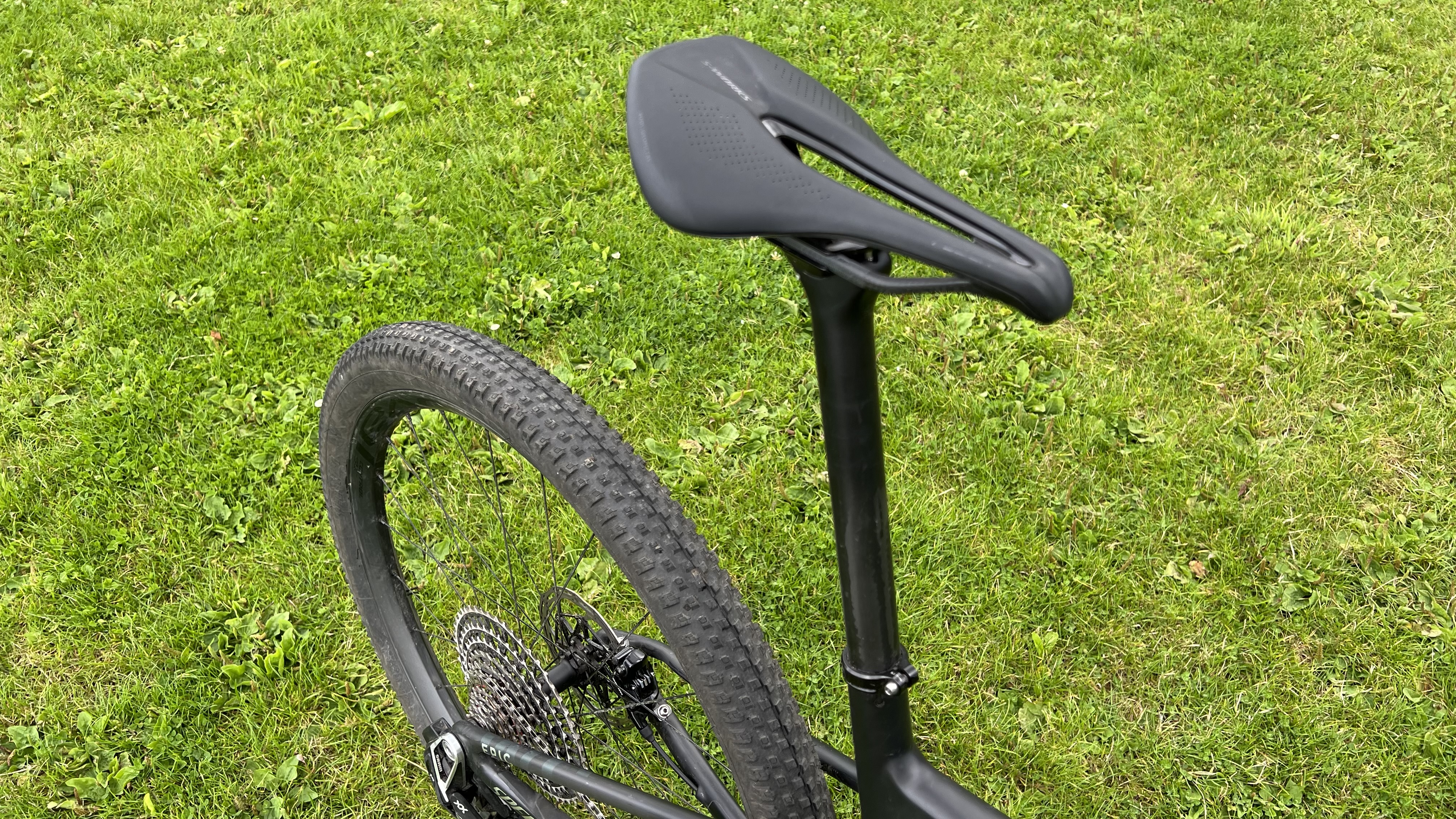
Verdict
I spent several months working back and forth with all the potential permutations of the World Cup’s suspension to try and match the ride up to the stunning looks and impeccable spec of this S-Works version. Riding it in isolation I had some excellent, flat out, fast and furious moments when I was fired up enough to attack everything full throttle and force the suspension to react in stiffer modes. If there’s enough terrain undulations to mask the mushy pedal stroke it climbs technical trails like it’s got a tank track on the back too. It’s already listed at a grand less than it was when launched a few months ago, so while it’s no affordable bargain, it’s not overly expensive considering the near perfect race spec (if you like rigid posts).
The mix of harsh, tiring, topped out brutality with morale sapping, mushy, out of phase pedaling is really hard to reconcile though. Especially as you’ll always be trying to pin the tail on the donkey in terms of an overall compromise for a course rather than being able to select modes manually with a remote – or by AI as Specialized are already racing RockShox Flight Attendant equipped Epic EVO bikes. Add in the fact that it’s nearly a kilo heavier than the Epic Hardtail frame (which is actually more comfortable in some situations) and heavier than the Epic EVO frame (that’s more comfortable, capable and controllable in every situation) and it’s really hard to recommend, except for very specific use cases.
But then again, with four different Epic race bike platforms to pick if anyone can afford to invest in that kind of specificity then it’s Specialized and they deserve a lot of respect for doing it with serious commitment and beautiful style.
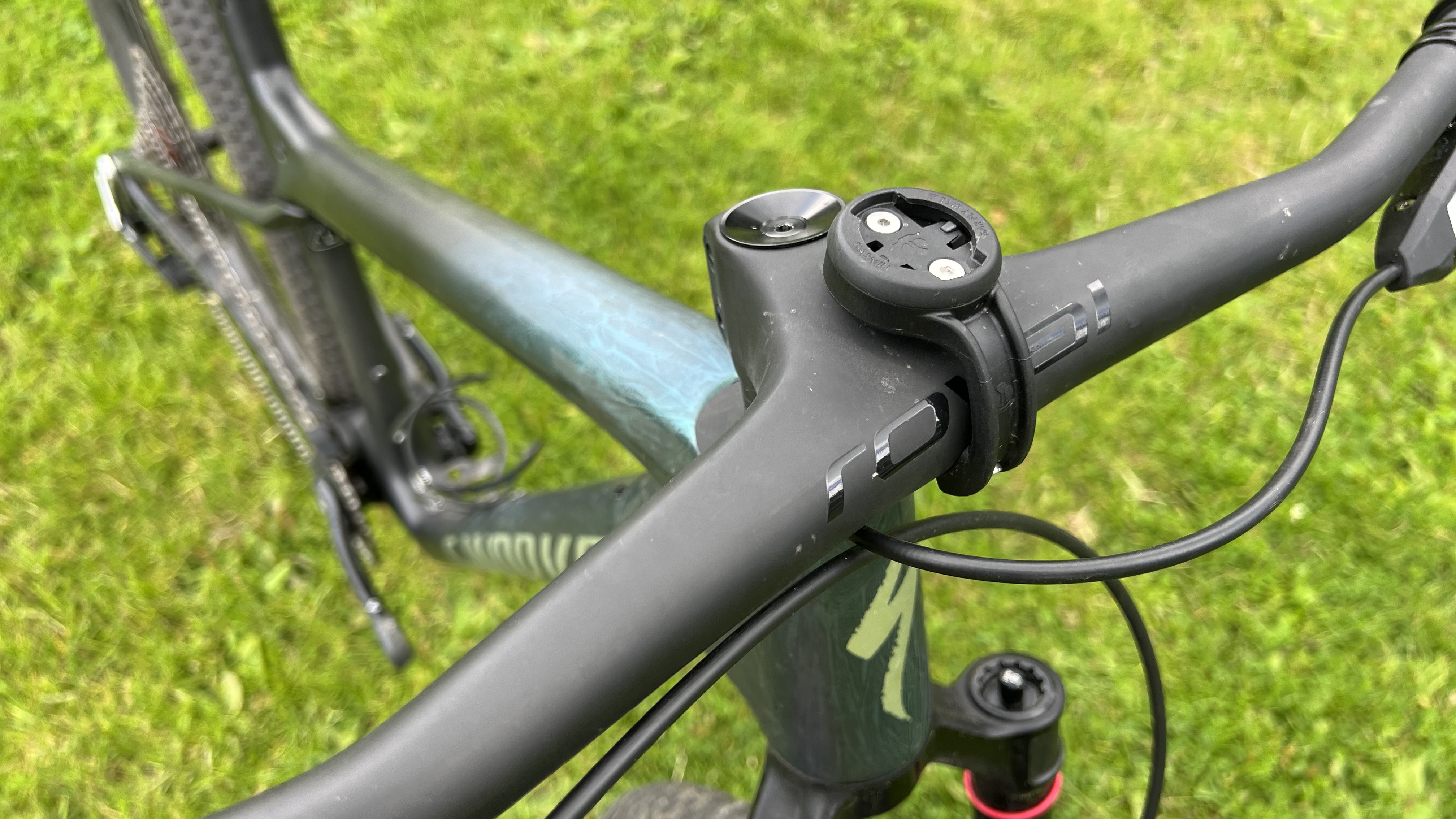
Test conditions
- Surface: Everything from road to loam, roots and loose rock
- Trails: Road gravel, natural XC, official XC courses, moorland singletrack, red and blue grade trails centre and off-piste play trails
- Weather: Everything from hot enough to bake dirt to raining hard enough to make winter bogs in midsummer
Tech specs: Specialized S-Works Epic World Cup
- Discipline: XC Race
- Price: $12,000 / £11,000 / €12,500
- Head angle: 67.5 degrees
- Frame material: Specialized FACT 12M carbon fibre
- Fork: RockShox SID SL ULTIMATE BRAIN 110mm travel
- Shock: RockShox-Specialized SIDLuxe WCID Ultimate 75mm travel
- Sizes: S, M, L (tested), XL
- Weight: 9.72kg (21.43lb) Large set up tubeless with bottle cage but no pedals
- Wheel size: 29in
- Chainset: SRAM Quarq XX SL power meter 175mm arms with DUB bottom bracket.
- Mech: SRAM Eagle AXS XX SL, T-Type
- Shifter: SRAM Eagle AXS XX SL
- Cassette: SRAM Eagle XX SL CS-1299 12-speed 10-52T
- Brakes: SRAM Level Ultimate, 2-piston hydraulic disc brakes with 180/160mm rotors
- Tires: Specialized S-Works Fast Trak 29x2.35in front and Specialized Renegade, Control 29x2.35in rear tires
- Wheels: Roval Control SL 29in with Torque Cap front adaptor
- Bars: Roval Control SL Integrated cockpit 760mm width, 70mm effective stem length
- Grips: Roval SL
- Seatpost: Roval Control SL carbon rigid
- Saddle: Body Geometry S-Works Power Carbon

Guy Kesteven has been working on Bike Perfect since its launch in 2019. He started writing and testing for bike mags in 1996. Since then he’s written several million words about several thousand test bikes and a ridiculous amount of riding gear. He’s also penned a handful of bike-related books and he reviews MTBs over on YouTube.
Current rides: Cervelo ZFS-5, Specialized Chisel, custom Nicolai enduro tandem, Landescape/Swallow custom gravel tandem
Height: 180cm
Weight: 69kg
